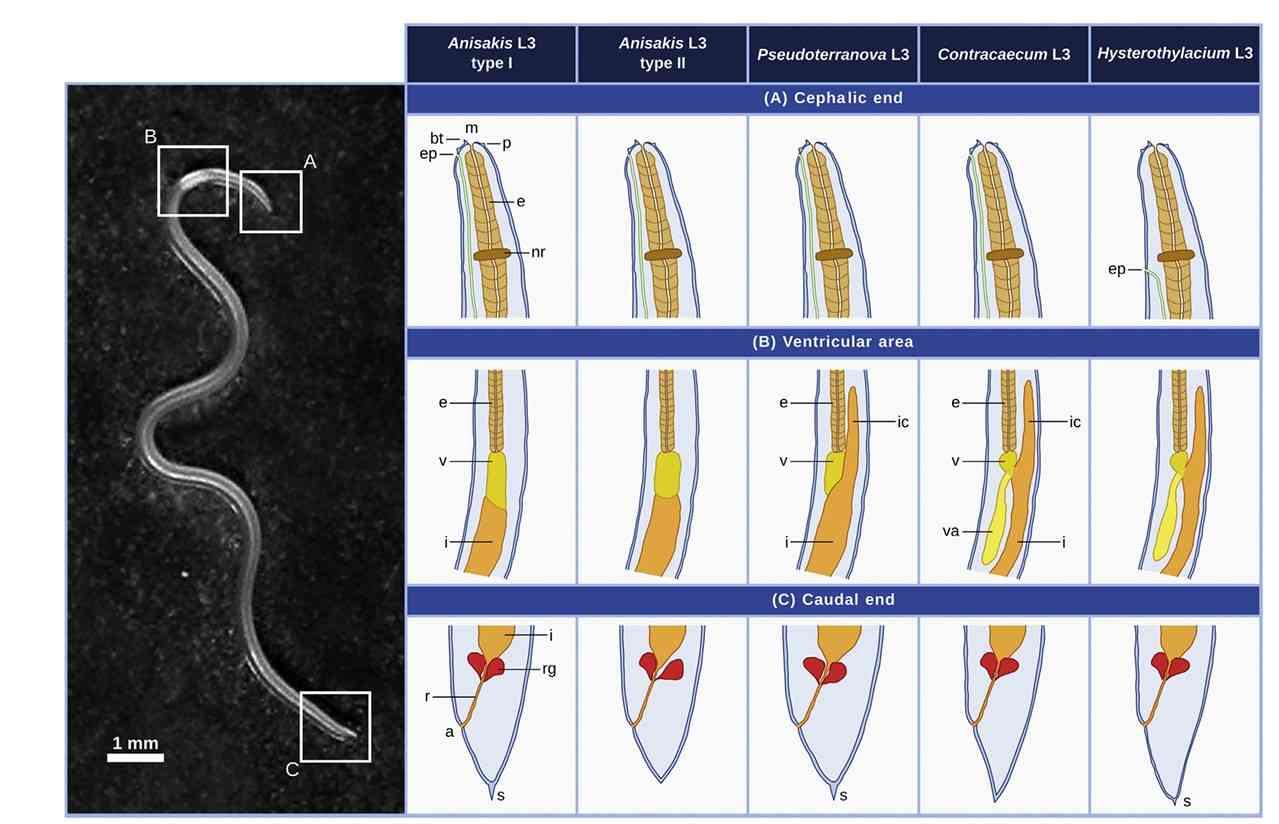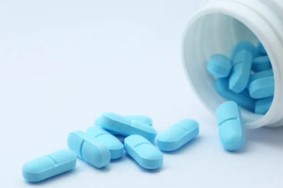
The infection caused by worms of the genus Anisakis, especially Anisakis simplex larvae, is known as anisakiasis. Furthermore, the other associated species Pseudoterranova decipiens, and Contracecum osculatum are also linked. Our company strives in providing high-quality services to its clientele, aiming to develop desirable vaccinations and therapies that will help in fighting Anisakiasis We place great emphasis on market research and immunotherapy of this disease.
Overview of Anisakiasis
This disease is usually caused by consuming Anisakis species infected larvae and is considered a parasitic disease. It is commonly found in raw seafood and fish that is not cooked properly. Anisakiasis is found in nations which consume raw fish too, especially Japan which has shown significant numbers of 20 cases out of 100,000 annually. With the change in time it has been represented in literature that anisakiasis now has become more common across the globe. Considering the clinical aspects, semi- isn't diarrhea, acute abdominal pain, nausea, and vomiting falls under the gambit of symptoms.
 Fig.1 Morphological differences among third-stage nematode larvae in fish that can cause anisakidosis. (Adroher-Auroux, F. J., and R. Benitez-Rodriguez., 2020)
Fig.1 Morphological differences among third-stage nematode larvae in fish that can cause anisakidosis. (Adroher-Auroux, F. J., and R. Benitez-Rodriguez., 2020)
Pathogenesis of Anisakiasis
Anisakiasis is caused due to parasitic infection acquired from consuming third stage larvae (L3) anisakis species which is present in fish and other marine animals that are not properly cooked. These animals, on the other hand, can burrow into the innards of an individual, resulting in them suffering from intense pain, allergic reactions, and in extreme cases gastritis or abscesses. The process in question involves the anchoring of the anisakis larvae to the gut mucous which in turn causes inflammation and an allergic response due to the release of the allergens present in the larvae as well.
 Fig.2 Histological section of a surgically removed eosinophilic granuloma showing an Anisakis sp. larva in sagittal view. (Mattiucci, S., et al., 2018)
Fig.2 Histological section of a surgically removed eosinophilic granuloma showing an Anisakis sp. larva in sagittal view. (Mattiucci, S., et al., 2018)
Diagnosis Development of Anisakiasis
Recent advancements in the diagnosis of anisakiasis on a molecular level have positively contributed in making a new technique which reduces the quantity of anisakis DNA to even 0.0006 ng/μL and is RT PCR hydrolysis technique. This advancement has proven to be extremely useful in detecting the causative agent taj Z A pegreffii even when the quantity of the DNA is so low that it would be impossible to detect through the traditional genetic sequencing methods. Such innovations are also crucial in assisting the anisakiasis diagnosis as well as treatment process as they tend to quicken the process ensuring a better treatment of patients with low amount of parasitic DNA.
Vaccine Development of Anisakiasis
 Target Discovery
Target Discovery
Parasite growth inhibition can in one way be achieved by utilizing protease inhibitors which is being explored by researchers currently. Surface antigens, that would otherwise be critical to the parasite's physiology, show promise the most in terms of being possible targets for a vaccine.
 Preclinical Research
Preclinical Research
A few research groups have been able to successfully generate recombinant Anisakis antigens and test them on various fish and mouse models. The findings show that these potential vaccines are capable of stimulating immune responses and partially preventing parasitic infections.
Our Services
Our company is happy to provide all aspects that will contribute to the creation of new anisakiasis vaccines and therapies. We have a group of highly experienced professionals, including scientists, immunologists, and pharmacologists who make the most of advanced tools and extensive knowledge of the area to help expedite the development of your projects.
Infectious Disease Model Development Services
- Anisakis simplex-Infected Rat Model
- Humanized Immune System Mouse Model Exposed to Anisakis simplex Antigens
- Human Intestinal Xenograft Mouse Model with Anisakis simplex Infection
Our team in anisakiasis therapy development, works on the invention and characterization of new antimicrobial compounds: small molecules, peptides, or biologics which antagonize virulence factors. Additionally, we provide assistance for the assessment, optimization and further development of your therapeutic pipeline.
If you are interested in our services, please don't hesitate to contact us.
References
- Adroher-Auroux, F. J., and R. Benitez-Rodriguez. "Anisakiasis and Anisakis: An Underdiagnosed Emerging Disease and Its Main Etiological Agents." Res Vet Sci 132 (2020): 535-45. Print
- Mattiucci, S., et al. "Molecular Epidemiology of Anisakis and Anisakiasis: An Ecological and Evolutionary Road Map." Adv Parasitol 99 (2018): 93-263. Print.
- De Vincentis, F., et al. "Asymptomatic Colonic Anisakiasis." Dig Liver Dis 53.5 (2021): 650-51. Print.
All of our services and products are intended for preclinical research use
only and cannot be used to diagnose, treat or manage patients.



 Fig.1 Morphological differences among third-stage nematode larvae in fish that can cause anisakidosis. (Adroher-Auroux, F. J., and R. Benitez-Rodriguez., 2020)
Fig.1 Morphological differences among third-stage nematode larvae in fish that can cause anisakidosis. (Adroher-Auroux, F. J., and R. Benitez-Rodriguez., 2020) Fig.2 Histological section of a surgically removed eosinophilic granuloma showing an Anisakis sp. larva in sagittal view. (Mattiucci, S., et al., 2018)
Fig.2 Histological section of a surgically removed eosinophilic granuloma showing an Anisakis sp. larva in sagittal view. (Mattiucci, S., et al., 2018)


